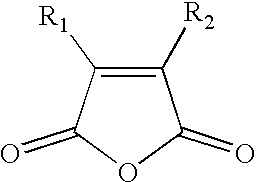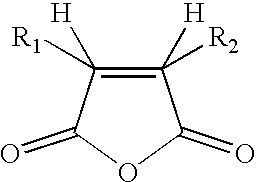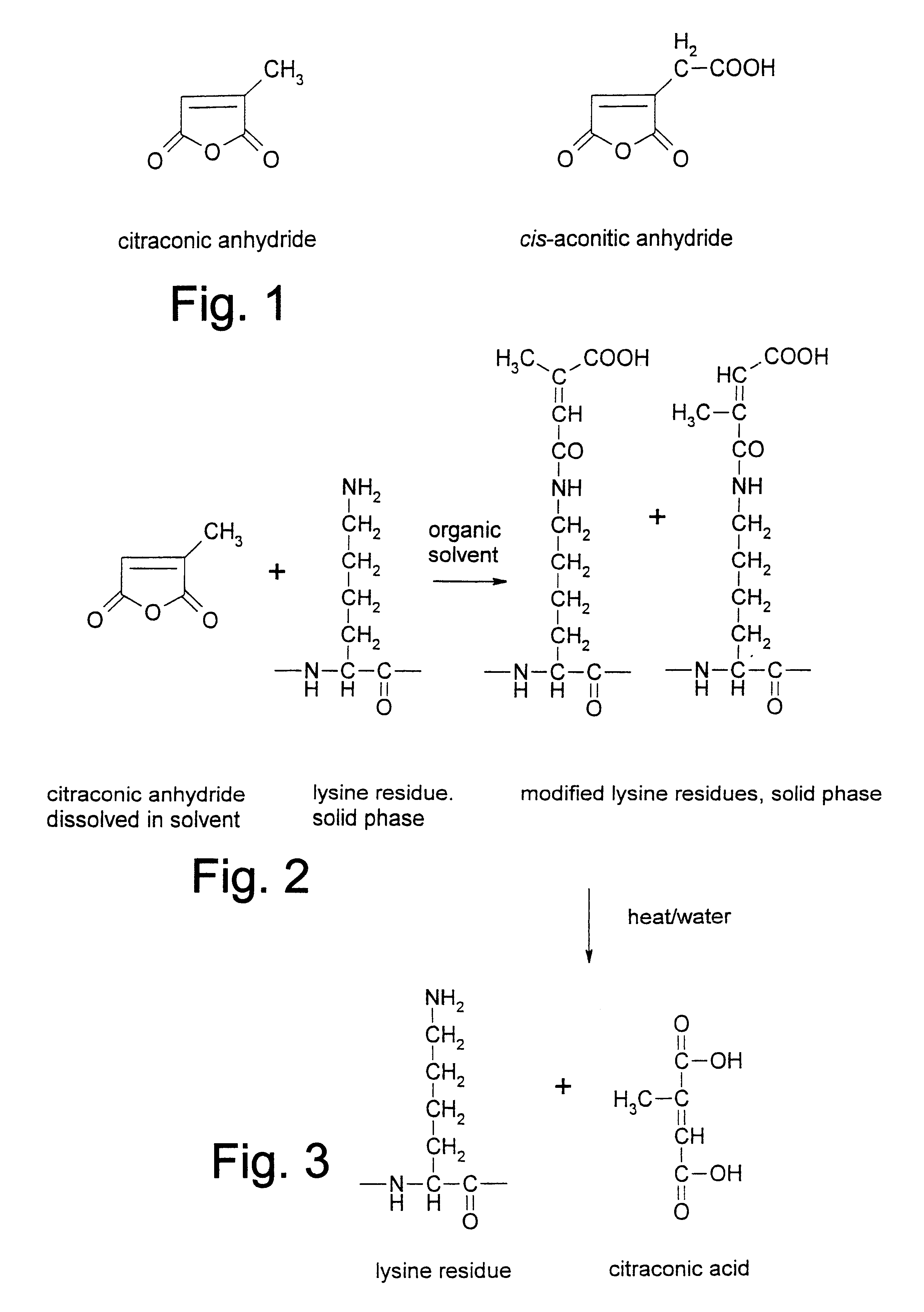Reversible inactivation enzymes
a technology of inactivation enzymes and enzymes, applied in chemical treatment enzyme inactivation, immunoglobulins, peptides, etc., can solve the problems of reducing the yield of pcr products, destroying enzyme activity, and exponentially amplification of non-specific products
- Summary
- Abstract
- Description
- Claims
- Application Information
AI Technical Summary
Problems solved by technology
Method used
Image
Examples
example 1
The DNA polymerase from Thermus aquaticus (50,000 units) is vacuum-dried in the presence of 2% sucrose (lyoprotectant) in double-distilled and de-ionised water. The resulting amorphous powder is then added to 5 mL anhydrous t-MBE, to which an excess of citraconic anhydride is added to modify the lysine groups in question (5% (v / v)). The solvent is then maintained at 37.degree. C. for 5 hours. At this stage the powder is washed 4 times with 10 mL hexane to remove any remaining contaminating modification reagent. Finally, the powder is stored as is at -20.degree. C., 4.degree. C. or dissolved in aqueous solution, or a storage buffer (20 mM Tris-HCI; 100 mM potassium chloride; 0.1 mM ethylenediaminetetraacetic acid; 1 mM dithiothreitol; 0.5% (v / v) Tween 20; 0.5% (v / v) Nonidet P40; 50% glycerol; pH 9.2) to the desired concentration (usually 5 units / .mu.L) and stored at -20.degree. C.
example 2
The DNA polymerase from Thermus aquaticus (50,000 units) is freeze-dried in the absence of lyoprotectants in a lightly buffered solution (10 mM Tris-HCI, pH 9.2). The resulting powder is then added to 5 mL anhydrous t-MBE, to which sufficient citraconic anhydride is added to modify the lysine groups in question (5%). The solvent is then maintained at 50.degree. C. for 5 hours. After the reaction is complete, and the powder is washed 4 times with 10 mL hexane to remove any remaining modification reagent. Finally, the powder is stored as is at -20.degree. C., 4.degree. C. or dissolved in aqueous solution, or a storage buffer (20 mM Tris-HCI; 100 mM potassium chloride; 0.1 mM ethylenediaminetetraacetic acid; 1 mM dithiothreitol; 0.5% (v / v) Tween 20; 0.5% (v / v) Nonidet P40; 50% glycerol; pH 9.2) to the desired concentration (usually 5 units / .mu.L) and stored at -20.degree. C.
example 3
The DNA polymerase from Thermus aquaticus (50,000 units) is dried or freeze-dried in the presence of 1 M Tris HCI at pH 9.2. The resulting amorphous powder is then added to 5 mL anhydrous ethyl acetate, to which an excess of citraconic anhydride is added to modify the lysine groups in question (5% (v / v)). The solvent is then maintained at 50.degree. C. for 5 hours. At this stage the powder is washed 4 times with 10 mL hexane to remove any remaining contaminating modification reagent. Finally, the powder is stored as is at -20.degree. C., 4.degree. C. or dissolved in aqueous solution, or a storage buffer (20 mM Tris-HCI; 100 mM potassium chloride; 0.1 mM ethylenediaminetetraacetic acid; 1 mM dithiothreitol; 0.5% (v / v) Tween 20; 0.5% (v / v) Nonidet P40; 50% glycerol; pH 9.2) to the desired concentration (usually 5 units / .mu.L) and stored at -20.degree. C.
PUM
| Property | Measurement | Unit |
|---|---|---|
| Angle | aaaaa | aaaaa |
| Temperature | aaaaa | aaaaa |
Abstract
Description
Claims
Application Information
 Login to View More
Login to View More - R&D
- Intellectual Property
- Life Sciences
- Materials
- Tech Scout
- Unparalleled Data Quality
- Higher Quality Content
- 60% Fewer Hallucinations
Browse by: Latest US Patents, China's latest patents, Technical Efficacy Thesaurus, Application Domain, Technology Topic, Popular Technical Reports.
© 2025 PatSnap. All rights reserved.Legal|Privacy policy|Modern Slavery Act Transparency Statement|Sitemap|About US| Contact US: help@patsnap.com



